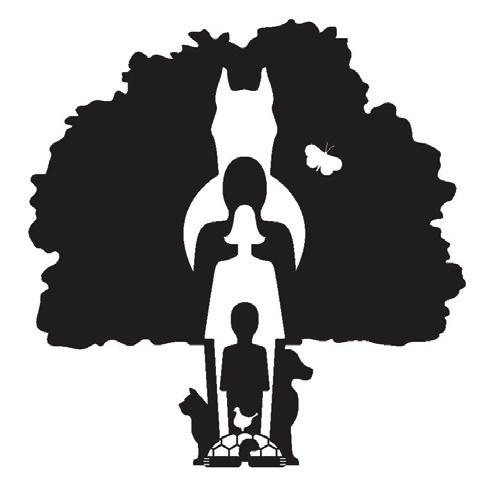
4 minute read
Speaking Their Language
Speaking Their Language by Cindy Huff & Terri Noftsger
One definition of communication is “two or more individuals sharing and understanding an idea” (Parelli Principle #3). When you consider this definition in the context of the relationship between a human and an animal, it seems almost impossible to understand how even the possibility of clear communication could exist. But, as we all know, it does. How?
Advertisement
The first thing that we have going in our favor is that both we and animals use body language to communicate. We humans tend to rely more on shared verbal or sign language when we communicate with each other, but when it comes to our animals, this can get very tricky. Our cat may not comprehend what “get off the counter top now!” means, but they do observe us having a tense body posture, gesturing hands, grimacing faces, and terse vocalization at that moment. They can tell we are not pleased about something involving them. Over time, if the cat repeatedly gets on the counter top, and we repeatedly ask them to get down in the same way, they come to understand that “off” and “countertop” has something to do with where they are. Being cats, of course, they may or may not choose to please you by getting down. However, you and your cat have communicated.
Our animals, no matter if we are talking about a teacup Poodle or a horse or our pet iguana, read our body language and glean a lot of information about us from that. They learn that certain body postures and facial expressions mean we are pleased or upset or relaxed. When we add vocalizations that we repeat consistently in certain situations, they begin to associate those words with the matching body language as our cat did above. What makes this so fascinating is that we learn to read their body language and vocalizations too. For example, if you live with a dog, you come to understand the difference between the body posture and bark of “I see the barn cat!” and “Intruder! Danger!” and “Let’s Play!” If you work with horses, observing their body language, facial expressions, and ear and tail positions tell you a lot about what kind of mood they are in. If you are thinking about riding that same horse, your life may depend upon
how well you read those signs. For example, if I walk out to the barn to play with and ride Cheyenne, and I am greeted with “grumpy mare face”, I immediately change my game plan accordingly, and spend much more time playing with her on the ground first to see if her mood will lighten up. If not, I’m not going to get on her.
Cheyenne and I recently went to Tennessee to participate in a 5 day class with 29 other horses and riders. What I learned during those 5 days, more than anything else, is how to communicate better with my horse. I learned that if I applied constant pressure on the reins to ask her to stop or back up, she would apply constant pressure right back at me as a way of saying “NO I don’t like that!”. Instead, what we learned together is that if I politely lifted the rein, and she did not respond, I released and then gently lifted the rein again, and repeated this until she figured out what I wanted and did it. We had a conversation, instead of behaving like two little kids yelling “NO” at each other. We began to communicate with each other in a way we both liked and understood. By the end of the week, I could ask her to stop by simply focusing on where I wanted her to stop, stopping the riding motion, and sitting still. We indeed were communicating much better together. Riding was a lot more fun for us both.
For all of us who love and live with animals, our ultimate goal is to have the best relationship we can with them. In order to do that, we must lead the way by observing them, learning their language (body postures, facial expressions, vocalizations, ear and tail sets), and helping them to better understand ours. Once we understand each other better, we can begin to find a common way to share ideas together. Have fun experimenting with this!
Animal Communication & Wellness Services

Cindy Huff & Terri Noftsger
(513) 310-3997 (513) 309-0957 www.acwservices.net
•Animal Communication •Healing Touch for Animals •Flower Essence Consultations •Canine & Equine Massage •& Other Healing Modalities
IAdvertise with nfinity
Enlightenment – Incredibly Easy!
Many paths lead people along the long road to enlightenment – when one overcomes the difficulties of negativity in the world of duality. At the conclusion Let us be the answer of the journey participants experience nothing but line Sound (& Color) Healing School. Jill presents new to your advertising ways of approaching health and everyday issues using needs! the benefits of sound and color! Free music & School of Sound Healing at www.jillswingsoflight.com










